Finger millet (Eleusine coracana L.) also known as Ragi in India is one of the important cereals which occupies the highest area under cultivation among the small millets. The state of Karnataka is the largest producer of ragi in India.
Ragi is a crop which can withstand severe drought conditions and can be easily grown throughout the year.
Nutritionally, when ragi is used as a whole grain, it is higher in protein and minerals in comparison to all other cereals and millets. It is a remarkable source of protein, making it perfect for vegetarian diets.
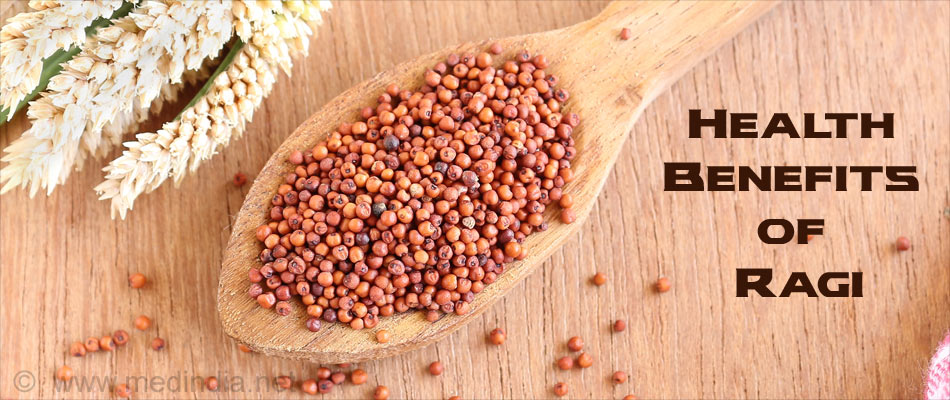 Finger millet contains important amino acids viz., isoleucine, leucine, methionine and phenyl alanine which are not present in other starchy meals. It has the highest amount of calcium (344 mg %) and potassium (408 mg %). Ragi is a great source of iron making it beneficial for individuals with low hemoglobin levels.
Finger millet contains important amino acids viz., isoleucine, leucine, methionine and phenyl alanine which are not present in other starchy meals. It has the highest amount of calcium (344 mg %) and potassium (408 mg %). Ragi is a great source of iron making it beneficial for individuals with low hemoglobin levels.
Millets also contains B vitamins, especially niacin, B6 and folic acid. Some of the health benefits of ragi are attributed to its polyphenol and dietary fiber contents.
Due to its high content of polyphenols and dietary fiber ragi exhibits anti-diabetic and antioxidant and antimicrobial properties; it protects against tumors and atherosclerosis (narrowing and hardening of blood vessels). Being low in fat and gluten free, ragi is easy to digest. It is therefore, given as first foods to babies in the form of ragi porridge
Health Benefits
Ragi for weight loss: Ragi contains an amino acid, Tryptophan which reduces appetite. It has a much higher amount of dietary fiber compared to white rice and other grains. It is also a low fat cereal and most of the fats are in the unsaturated form.
This makes it the best choice in grains for people trying to lose weight. The bulkiness of the fibers and the slower digestion rate makes one feel fuller on fewer calories and therefore helps prevent excess caloric consumption.
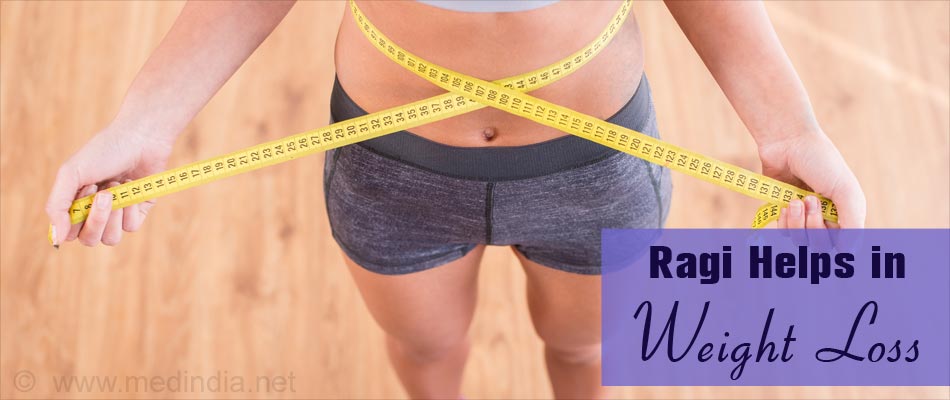 Ragi for bones: Ragi is the richest source of calcium among plant foods. Calcium along with vitamin D helps to strengthen bones.
Ragi for bones: Ragi is the richest source of calcium among plant foods. Calcium along with vitamin D helps to strengthen bones.
It is an excellent source of natural calcium for children and aging people. It helps in development of bones in growing children and in maintenance of bone health in adults. Thus Ragi helps to keep bone problems at bay and could reduce risk of fractures too.
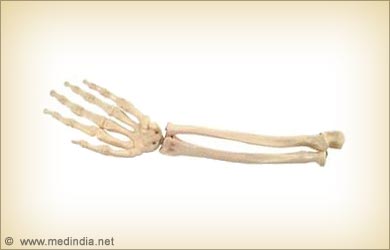
Ragi for diabetics: Regular consumption of finger millet is known to reduce the risk of diabetes mellitus and gastrointestinal tract disorders and these properties are attributed to its high polyphenol and dietary fiber content.
According to research Finger Millet based diets help diabetics as they contain higher amounts of fiber over other cereals and millets. Diets based on whole finger millet have a lower glycemic response i.e. lower ability to increase blood sugar level. This has been attributed to presence of certain factors in ragi flour which lower digestibility and absorption of starch.
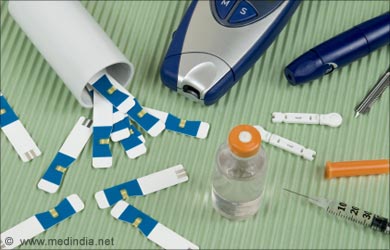
Ragi for lowering high cholesterol levels: Ragi contains amino acids Lecithin and Methionine which help in bringing down cholesterol levels by eliminating excess fat from Liver. Finger Millet also contains the amino acid threonine which hinders fat formation in the liver, and helps to bring down the cholesterol levels. The high fiber content of ragi also helps to manage cholesterol problems.
Ragi in anemia: Ragi is an excellent plant source of natural Iron. Its consumption helps in Anemia. Vitamin C increases iron absorption. Sprouted ragi develops vitamin C in the process of sprouting, therefore the iron in ragi becomes more bioavailable when consumed as sprouted ragi flour or ragi malt.
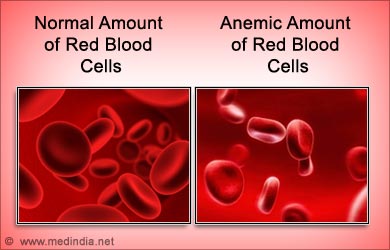 Ragi for relaxation: One amazing benefit of Ragi is that it helps in relaxing the body naturally. It is found to be beneficial in conditions of anxiety, depression, migraine and insomnia.
Ragi for relaxation: One amazing benefit of Ragi is that it helps in relaxing the body naturally. It is found to be beneficial in conditions of anxiety, depression, migraine and insomnia.
Ragi as a source of essential amino acids: Ragi is rich in Amino Acids vital for the body.
Finger Millet contains amino acids namely Tryptophan, Threonine, Valine, Isoleucine and Methionoine. Isoleucine helps in muscle repair, blood formation, bone formation and improves skin health.
Valine is an essential amino acid which facilitates metabolism and repair of body tissues. Another essential amino acid, not found in most cereals, is Methionine. It is found in Ragi and therefore makes it a complete protein food unlike other cereals and millets.
The amino acid Methionine is useful in various body processes, helps in eliminating fat from the body, and is main provider of sulfur in body. Sulfur is essential for production of Glutathione which is the body's natural and most important antioxidant.Ragi Food Preparations
Finger millet is normally consumed in the form of flour-based foods such as roti (unleavened pancake), mudde(stiff porridge/dumpling) and ambli (thin porridge). Ragi can be used to make porridge, upma, cakes, and biscuits. Ragi flour is used to make various Indian preparations like dosas, idlis and ladoos.
'Puttu' is a traditional breakfast of Kerala, usually made with rice powder together with coconut and steamed in a cylindrical steamer. The same preparation is also made with ragi powder, which makes it more nutritious
Multigrain flour preparation by combining wheat and finger millet in the ratio of 7:3 (wheat: finger millet) is one of the simplest ways of incorporating ragi in the daily diet as no Indian meal is complete without the Indian style bread or roti. In the proposed blend, though the gluten content is reduced significantly, the making of chapatti is not much affected. However, the color turns a little dark.
Fortification of finger millet in chapattis is very helpful in controlling glucose levels in diabetic patients efficiently.
Malted ragi grains are ground and consumed, mixed with milk, boiled water or yogurt. In southern parts of India, it is a recommended food, by doctors, for infants of six months and above because of its high nutritional content.
Homemade ragi malt is one of the most popular infant foods till date.
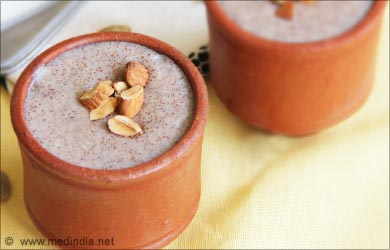
Malting characteristics of finger millet are superior to other millets. On malting the vitamin-C is elaborated, phosphorus availability is increased, digestion is easier and amino acids are synthesized. In south India, the malted ragi flour is extensively used in preparation of weaning foods, instant mixes and beverages.
Despite finger millet's rich nutrient profile, low cost and easy availability recent studies indicate its lower consumption in general by urban Indians.
Obesity has become a matter of health concern in India. Unhealthy foods have increasingly become a part of the food choices made by youth.
Large populations of children in the country are malnourished and are deficient in calcium and protein. The millet ragi then could be the answer to all the above problems relating to nutrient deficiencies.
Ragi is truly a wonder cereal grain and should be consciously incorporated in the diets in one way or the other.
Millet, raw
The nutritional values of "Millet, raw" per 100 grams are:
| Nutrition Summary |
| Total Calories | 378 |
| Protein | 11 g |
| Fat | 0.4 g |
| Carbohydrate | 72.9 g |
| Nutrients | Amount | %Daily Value |
| Calcium, Ca | 8 mg | 0.8 % |
| Copper, Cu | 0.75 mg | 37.5 % |
| Iron, Fe | 3.01 mg | 16.72 % |
| Magnesium, Mg | 114 mg | 28.5 % |
| Manganese, Mn | 1.63 mg | 81.6 % |
| Phosphorus, P | 285 mg | 28.5 % |
| Potassium, K | 195 mg | 5.57 % |
| View all + |
Data source: USDA Nutrient Database, R25
*Percent Daily Values (%DV) are based on a 2,000 calorie reference diet. Your daily values may be higher or lower based on your individual needs.
Read more: Health Benefits of Ragi http://www.medindia.net/patients/lifestyleandwellness/health-benefits-of-ragi.htm#ixzz3XArQBml1
Ragi Malt Recipe / Ragi Sweet Porridge Recipe
This is one dish which we make often for breakfast..I am not sure why i haven't posted it so far. Recently one of my viewer asked me to post this recipe. Immediately i made it and sharing it here..
This is such a healthy and filling breakfast. You can feed this for babies as well. Ragi is a great food when you are in diet. Even if you are not in diet, you can take this atleast once a week. There is another version which is a spicy version, will share that soon. I hope you will try this out and let me know how it turns out for you..

Preparation Time : 1 mins
Cooking Time : 10 mins
Serves : 3 to 4
Ingredients:
Ragi Flour / Finger Millet Flour - 1/2 cup
Water - 2 cups
Previously Boiled Milk - 1.5 cup
Sugar / Palm Sugar / Jaggery - as needed
Cardamom Powder / Yelakai - 1/2 tsp
Almonds / Cashews / Pista - as needed
Method:
If you are using jaggery or palm sugar. Take it in a sauce pan, add in some water and heat so it is melted. Now strain this and set aside. If you are using sugar, dont need to do this.
Now take ragi flour in a sauce pan, add water slowly and keep mixing so no lumps are formed in ragi.
Once it is mixed, add milk and mix well.
Now put this on heat and keep mixing. Cook this for 5 to 7 mins till the malt is thick and cooked.
Now take it off heat and add in sugar or the strained palm sugar syrup. Add in cardamom powder and chopped nuts as well.
Let it turn warm and then serve. Add more milk if needed.
Notes:
1)You can use any sweetner as per your choice.
2)You can add powdered nuts or chopped nuts as you like.
3)You have to keep mixing this when heating or you will get lumps.
4)You can add low fat milk too.
Pictorial:
 |
| Take all your ingredients |

|
| For sweetness, i used palm sugar / karupatti |
 |
| add water to them |
 |
| heat till it is melted |
 |
| strain it |
 |
| syrup done |
 |
| now take ragi flour in a sauce pan |
 |
| add water and keep mixing so no lumps are formed |
 |
| once it is mixed well |
 |
| add in milk |
 |
| now heat it up |

|
| keep mixing, so no lumps forms |
 |
| once it gets thick and the ragi is cooked |
 |
| add in jaggery syrup |
 |
| cardamom powder |
 |
| you can add any nuts, i added some chopped badam |
 |
| mix well..at this point you can add some more milk |
 |
| serve warm.. |

Crispy Ragi Dosa Recipe / Ragi Dosa Recipe
This is the dosa which i was talking in this idli post. Actually both are same recipe,but there is one variation that you dont have to add baking soda in this. But i wanted to post this as a separate post because of the pics. If i join this in that idli post then i cannot show the beauty of the crispy dosa clearly to you.
This dosa turned out so crispy, not like my instant ragi dosa. I loved it so much, so make yourself a batch of this batter and you can make fluffy ragi idlyand crispy ragi dosa. TWO IN ONE..I served it withtomato chutney. So give this a try and let me know how it turns out for you..

Preparation Time : 20 to 30 mins
Soaking Time : 4 to 6 hours, if you checked notes, then 30 mins
Fermenting Time : Overnight
Cooking Time : 1 to 2 mins per dosa
Serves : 5 to 6
Ingredients:
Rice - 1 1/2 cup ( I used idli rice)
Urad dal / Whole Ulundu Paruppu - 3/4 cup
Ragi Flour - 1.5 cup
Salt to taste
Water as needed
Oil for Pan frying dosa
Method:
Wash and Soak rice and dal separately, Soak them in water separately for 4 to 6 hours. CHECK NOTES.
Once they are soaked, grind them separately by adding little water at a time to a smooth paste. Transfer them to a large container.
Now add in ragi flour and salt. Mix well. Cover and let it ferment overnight.
The next morning, the batter would be risen, fold it well.
Add some water to it and mix to get the right consistency. It shouldn't be too thin or too thick.
Now heat a tawa, take ladleful of batter and make thin dosa.
Drizzle oil around the sides.
Let it cook till it gets golden, flip over and cook for few more sec.
Remove and serve.
Notes:
1)This is my little secret trick for soaking rice and dal in 30 mins. I just add some hot water(not boiling) over the dal and rice and leave it for 30 mins. Then i drain them and while grinding i add ice cold water to grind. This is how i did this idli and it came out really soft and good.
2)The batter should not be too thick , It should be little thin but not too thin
3)Dal and Rice should be grinded till it is smooth, a little grit in rice is not a issue, since rice would never grind to a smooth paste in mixie.
4)Use a large container when you are fermenting, because my batter rised too much and a little over flowed.
 |
Soak urad dal and rice..
CHECK NOTES FOR THE SECRET TRICK
TO MAKE SOAKING FASTER |
 |
| Urad dal is soaked |
 |
| rice too |
 |
| First take dal in a blender |
 |
| grind them little |
 |
| add some water |
 |
| make it into a fine puree |
 |
| transfer that to a container |
 |
| Now in the same blender, take rice |
 |
| grind it a little |
 |
| add water |
 |
| make it into a smooth paste |
 |
| pour that into the dal mix |
 |
| add ragi flour |
 |
| some salt |
 |
| mix well |
 |
| done |
 |
| cover and let it ferment |
 |
| The batter is thick |
 |
| take some batter in a bowl |
 |
| add water to it |
 |
| the batter should be little thin |
 |
| heat a tawa |
 |
| pour some batter |
 |
| spread it thinly and drizzle oil around the sides |
 |
| cook till it is golden |
 |
| flip over and cook |
 |
| serve |










 yummytummyaarthi.comhttp://www.yummytummyaarthi.com/2014/08/crispy-ragi-dosa-recipe-ragi-dosa-recipe.html
yummytummyaarthi.comhttp://www.yummytummyaarthi.com/2014/08/crispy-ragi-dosa-recipe-ragi-dosa-recipe.html























































